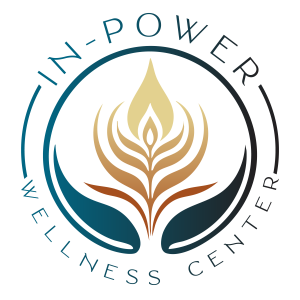-
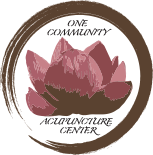 One Community
One Community
Acupuncture Center342 S Main St.
Unit 1 Lower Level
Bartlett, Illinois 60103(630) 837-4241 Hours
Mon3pm-7pmTue9am-1pmWed10am-1pm, 3pm-7pmFri10am-1pm, 3pm-7pmSat1pm-4pm
Reviews from Google
Carlos is an incredibly knowledgeable and professional acupuncturist. He has he helped me with various ailments ranging from emotional instability to physical pain over the course of the last four years. His kind and compassionate demeanor is exactly what you're looking for when it comes to a healthcare provider. I highly recommend him and all of his massage therapists at OCAC.![EleLotus Yoga Amy B]() EleLotus Yoga Amy B01:02 12 Aug 18For years I suffered from migraines and as a result I was taking two medications. I was beginning to have serious side effects from the medication so I decided to try acupuncture with Carlos. I am happy to say that I am now completely off all medication and I don’t have migraines anymore! It is amazing what acupuncture can do and Carlos is a master. I have referred many family members to Carlos (including some who were afraid of needles) and they all had positive results. My husband’s back injury was cured quickly while my daughter finds acupuncture and cupping helpful in relieving stress. I have a relative with lupus who could not sleep due to pain in her legs and she found great relief after seeing Carlos. I have also known women with fertility issues who were able to conceive after treatment with Carlos. I believe that any problem, whether it be physical, mental, emotional, or psychological can be helped by acupuncture and Carlos’ friendly manner and gentle approach puts his patients at ease.
EleLotus Yoga Amy B01:02 12 Aug 18For years I suffered from migraines and as a result I was taking two medications. I was beginning to have serious side effects from the medication so I decided to try acupuncture with Carlos. I am happy to say that I am now completely off all medication and I don’t have migraines anymore! It is amazing what acupuncture can do and Carlos is a master. I have referred many family members to Carlos (including some who were afraid of needles) and they all had positive results. My husband’s back injury was cured quickly while my daughter finds acupuncture and cupping helpful in relieving stress. I have a relative with lupus who could not sleep due to pain in her legs and she found great relief after seeing Carlos. I have also known women with fertility issues who were able to conceive after treatment with Carlos. I believe that any problem, whether it be physical, mental, emotional, or psychological can be helped by acupuncture and Carlos’ friendly manner and gentle approach puts his patients at ease.![Teresa]() Teresa22:36 18 Feb 18In my experience, Carlos is the most experienced and skillful acupuncturist in Chicago's western & northern suburbs. Highly recommended. Very kind. Very reasonable rates. Carlos made a big difference in my successful recovery from surgery as well as calming stress.
Teresa22:36 18 Feb 18In my experience, Carlos is the most experienced and skillful acupuncturist in Chicago's western & northern suburbs. Highly recommended. Very kind. Very reasonable rates. Carlos made a big difference in my successful recovery from surgery as well as calming stress.![P Rush]() P Rush14:33 18 Dec 17I had been experiencing digestion issues for over 6 months. I tried traditional medicine and multiple remedies before finding Carlos. I couldn't be more grateful I did. After regular weekly visits (which include acupuncture and cupping), I am off all medications recommended by doctors and back to having a full functioning digestive system in and of itself. Carlos is incredibly knowledgable and makes every experience an enjoyable one. Would highly recommend him to anyone.
P Rush14:33 18 Dec 17I had been experiencing digestion issues for over 6 months. I tried traditional medicine and multiple remedies before finding Carlos. I couldn't be more grateful I did. After regular weekly visits (which include acupuncture and cupping), I am off all medications recommended by doctors and back to having a full functioning digestive system in and of itself. Carlos is incredibly knowledgable and makes every experience an enjoyable one. Would highly recommend him to anyone.![Meryl Cripe]() Meryl Cripe23:42 31 Jul 17Carlos was able to alleviate my back and shoulder pain in just a couple sessions. My experience is always relaxing and I would recommend to anyone looking to avoid pain medication and other traditional treatments which tend to provide only symptomatic relief but require constant use.
Meryl Cripe23:42 31 Jul 17Carlos was able to alleviate my back and shoulder pain in just a couple sessions. My experience is always relaxing and I would recommend to anyone looking to avoid pain medication and other traditional treatments which tend to provide only symptomatic relief but require constant use.![Kristin Kinnaman]() Kristin Kinnaman21:36 14 Aug 17Carlos is great! He helped me with a shoulder issue before a big event, without his help I would have struggled through the event.
Kristin Kinnaman21:36 14 Aug 17Carlos is great! He helped me with a shoulder issue before a big event, without his help I would have struggled through the event.![Nicole Pawola]() Nicole Pawola00:13 22 Nov 18A friend of mine recommended Carlos for a shoulder issue that I was dealing with. I was so grateful because after 2 sessions he had me back to 100% range of movement. I highly recommend Carlos. He's very knowledgeable and compassionate.Patti Salwach01:23 15 Mar 19Carlos is incredible! I struggled to get pregnant for over a year, and was referred to acupuncture. My chiropractor shouted Carlos’ name without hesitation! Carlos has such knowledge and precision in his practice. He has helped calm my anxiety, migraines, body aches, and with a few months of treatment, I was able to get pregnant. I had a small surgery in between, but acupuncture helped ease the pain and was able to get me up and running in no time. It has also helped me to relax in my pregnancy. I look forward to my sessions for the calm, inward focus of myself. Carlos has taught me a LOT. Thank you for all you have done thus far!Carmella Mahaz02:35 01 Aug 19I highly highly recommend Carlos. Before I started Accupuncture, I had horrible back pain, migraines, anxiety, depression, mood changes. After 10 meetings, I feel so great, so relaxed and "me" again. In the last 3 years, I did Phisical Therapy, I was taking medicines for migraines, but non of them helped me that much and in a shorter period of time how Accupuncture did. Carlos has "golden" hands and is very knowledgeable. Don't hesitate to schedule an appointment with Carlos, you won't regret it!
Nicole Pawola00:13 22 Nov 18A friend of mine recommended Carlos for a shoulder issue that I was dealing with. I was so grateful because after 2 sessions he had me back to 100% range of movement. I highly recommend Carlos. He's very knowledgeable and compassionate.Patti Salwach01:23 15 Mar 19Carlos is incredible! I struggled to get pregnant for over a year, and was referred to acupuncture. My chiropractor shouted Carlos’ name without hesitation! Carlos has such knowledge and precision in his practice. He has helped calm my anxiety, migraines, body aches, and with a few months of treatment, I was able to get pregnant. I had a small surgery in between, but acupuncture helped ease the pain and was able to get me up and running in no time. It has also helped me to relax in my pregnancy. I look forward to my sessions for the calm, inward focus of myself. Carlos has taught me a LOT. Thank you for all you have done thus far!Carmella Mahaz02:35 01 Aug 19I highly highly recommend Carlos. Before I started Accupuncture, I had horrible back pain, migraines, anxiety, depression, mood changes. After 10 meetings, I feel so great, so relaxed and "me" again. In the last 3 years, I did Phisical Therapy, I was taking medicines for migraines, but non of them helped me that much and in a shorter period of time how Accupuncture did. Carlos has "golden" hands and is very knowledgeable. Don't hesitate to schedule an appointment with Carlos, you won't regret it!![mirela craciun]() mirela craciun19:16 04 Oct 19I have been experiencing overwhelming anxiety and panic attacks for years. I've tried traditional medicine and read all the books and websites to learn how to manage my anxiety, I've tried it all with minimal results. I finally decided to try acupuncture. I can't tell you what a difference it has made. I have my quality of life back, and within 3 visits. Carlos is caring and dedicated and wants to help you feel better and be you best self. The office is a relaxing and warm environment. Best decision I have ever made. I highly recommend you visit Carlos and get your health back.
mirela craciun19:16 04 Oct 19I have been experiencing overwhelming anxiety and panic attacks for years. I've tried traditional medicine and read all the books and websites to learn how to manage my anxiety, I've tried it all with minimal results. I finally decided to try acupuncture. I can't tell you what a difference it has made. I have my quality of life back, and within 3 visits. Carlos is caring and dedicated and wants to help you feel better and be you best self. The office is a relaxing and warm environment. Best decision I have ever made. I highly recommend you visit Carlos and get your health back.![Paula Kintzel]() Paula Kintzel02:19 19 Dec 16I had been dealing with groan strain for years, I could not believe how effective Carlos's treatment was. Highly recommend his practice.Thomas Tukiendorf17:48 26 Apr 21I have chronic neck pain, that drs wanted to burn my nerves in my neck to help with pain management. Carlos has helped me with the pain without the surgical treatments.Cami Mears19:15 05 Mar 21Carlos is amazing at what he does. He is very dedicated to his work and extremely knowledgeable of acupuncture. He helped me get rid of my pain and I highly recommend Carlos to anyone suffering.J M18:27 17 Sep 20Carlos Carpintero, L.Ac. Is a very good acupuncturist. He is very professional and has a good personality to put you to ease. I would whole heartedly recommend Carlos.Scott Trebes21:47 01 Jun 21I've been coming for few months now and can say all the good things about the place and Carlos. He's helped me with my back pain, bad migrainces, low energy levels, high stress level and boost my immune system. I continue going to keep myself healthy. I since then sent there my husband with his back pain and my Mom for her back problems, hands numbness and high blood pressure. Highly recommended!Aneta Cybruch21:27 14 Jan 22I have been experiencing join pain and chronic fatigue for 6 years. I have seen multiple doctors and have have been diagnosed with lupus and fibromyalgia. I have tried medicine with minimal improvement. My friends kept asking if I had ever tried acupuncture. 2 months ago, I have decided to make an appointment at One Community Acupuncture Center. At that time, I was experiencing constant fatigue for 3 weeks struggling to make it to the end of each day, taking care of my kids and having full time job. It was very easy to make an appointment with Carlos since he was willing to work with my schedule. The office setting is very calm and relaxing. Carlos provided compassionate care from the very beginning demonstrating effective listening skills, in depth knowledge about various treatments and accurate assessment of physical and emotional state of his patient. Just after the first acupuncture treatment my fatigue was gone! After every visit I feel relaxed, and when I wake up the next morning I keep thinking about how much energy I have all day, even when I work 12 hour shift! Carlos also provided treatment with cupping and that was incredibly helpful as well. My energy level increased so significantly that I am able to exercise on regular basis now. I am also able to manage my stress level much better. I am extremely happy and thankful for all the positive changes I have been experiencing since my first visit with Carlos. I feel 90% better now then before my first visit. Carlos’ compassionate and insightful manner was not only able to improve my physical but also my psychological well-being, which I believe has significant impact on our overall health. I highly recommend One Community Acupuncture Center.Magdalena Socki10:49 16 Sep 21I came here by recommendation from my chiropractor suffering with very painful hip bursitis pain. Within 2 treatments I felt significant relief. The bonus treatment I received was relaxation, the acupuncturist Carlos found relaxation points to relax me as well. Outstanding treatment. Carlos listens, cares, and treats pain until it disappears!! I highly recommend One Community Acupuncture.Myra Onesimus12:00 20 Oct 21Carlos has been treating my husband for the past 2 month. He’s been able to help him regain his strength and relieve pressure in his head that no neurologist has been to help him since there is no medical diagnosis. I highly recommend visiting Carlos.Alejandra Gonzalez01:44 01 Sep 21I started going to Carlos a little over a month ago after I tried many different types of therapies to try and relieve my upper back pain, but nothing was helping. Carlos took the time to understood my pain and the issues that I was feeling. After the first two sessions, I felt great! I have never had acupuncture or cupping before, so I was unsure what to expect. However, he takes the time to explain the process and makes you feel right at ease. I also feel so relaxed afterwards, which is another reason I like going. For anyone looking to get some pain relief after trying many different therapies, I would highly recommend trying acupuncture and going with Carlos.Ian Petersen20:35 14 May 22I had been struggling with bone on bone arthritis in my shoulder for almost 2 years. After a car accident the end of October, I began seeing Dr. Carpintero twice a week. After six weeks, my pain has significantly lessened and my range of motion is greatly improved. At the same time I am receiving acupuncture for the plantar fasciitis I have in both feet. That condition has also greatly improved. Surprisingly, one of the most profound shifts I have experienced is been in the amount of stamina and energy I have regained after adding acupuncture to my wellness practice. For anyone looking to enhance their health and well-being, I definitely recommend One Community Acupuncture Center.Pam Schilling21:06 14 Dec 22Great place he helps with all kinds of pain I've been having headaches for years I had an MRI from my doctor then went to the neurologist but nothing worked till I seen Carlos now I have no headaches it even helped me with anxiety try this place its covered by most insurance 5 stars I would give him 10 stars if I couldRon Rose21:37 01 Dec 22I was having immense pain in my shoulder and having carpal tunnel issues for about a year now. I was at the end of my rope dealing with this chronic pain. I did some research and decided to try acupuncture. After about five sessions or so, the pain is almost non-existent. My anxiety has definitely decreased as well. Highly recommend! Thank you Carlos!Val C02:18 01 Jul 23I am really thankful to find this place. I had really bad pain in my elbow. So I went to this place. Carlos did my treatment. And it seems like a magic in his hands. His treatments were very effective and my pain was gone in 3 treatments. He is very patinated about his work that I can see it and feel it in his way of doing treatment. I am very glad I found this place. I highly reccomand it.S Patel19:29 11 Jul 23I would love to give Carlos a five-star review. He's been absolutely amazing. He helped me with my back pain during pregnancy, and after just five appointments, my pain completely disappeared. Acupuncture was a tremendous help and also significantly reduced my stress levels.Kinga Szkotak22:10 13 Feb 24Carlos is an excellent Acupuncturist. I am seeing a great improvement with my back and inner ear issues. Carlos was recommended to me by an Orthopedic Specialist. I am glad I got this referral. I am able to finally walk with no pain, and my equilibrium is stabilized. My body is adjusting very well to Acupuncture.Judy Tarchinski01:12 11 Apr 24Carlos has amazing knowledge and has helped me so much! My knee is so much better. I can now go for walks and exercise to loose weight and better health. His office is relaxing and very comfortable. With his treatment I am able to delay knee surgery which is amazing! I highly reccomend!Dianna Dianovsky17:29 27 Apr 24Nine years ago I was diagnosed with Chronic Migraines due to my hormones changing from my miscarriage, and I wanted to try acupuncture to relief some of my migraines and pains that came with it. I didn’t want to always take my strong sumatriptan pill for my migraines or other medicines since it’s not good for your body. What I found effective about my acupuncture treatment was that after my 1st and 2nd treatment I started to feel better and I used a lot less sumatriptan pills and other migraines medicines, also I don’t wake up with eye pressure, forehead pressure and a sore neck anymore. So the IV that has vitamins for migraines and doing acupuncture helped me to feel better and be able to go outside and be in the sun and heat without getting migraines or have a slight migraine that was bare-able just taking one of my regular migraine medicine. Yes I would recommend Doctor Carlos Carpintero and his expertise in acupuncture treatment because he also suffers from migraines so he knows how it feels like and how to treat migraines. I have had way less migraines attacks and taking less medicine and able to go outside and do things, and before I used to be super sick and staying in bed resting or sleeping. This acupuncture treatments have helped out a ton and starting to feel normal again, and not feeling sick everyday. Also he is very informative to the questions that you have and answers them, he always asks you how you feel and how your doing, great at keeping track on how many treatments you need and schedules them right away at your convenience, he’s very nice and so is his assistant. Also, I love how his clinic is close by and I didn’t have to go to Chicago to get my acupuncture done, and good pricing for the acupuncture as well if your insurance doesn’t cover it. Sincerely, Catideli Peña.catideli pena19:32 19 Jun 24Carlos is a very kind and knowledgeable practitioner. I started seeing him for migraines and trouble sleeping, but each visit is customized to how you're feeling and what you want to work on. If you're curious in acupuncture at all, I would definitely recommend giving his treatments a try!Brittany Marocchi14:44 02 Feb 24I would love to give Carlos 5 -star review. He is an excellent accupuncturist. I have been dealing with anxiety, have sleeping problems and he has been a tremendous help. Each visit was customized to my symptoms and it was very peaceful and relaxing. I saw a big improvement with sleep and stress level. I highly recommend Carlos for anyone struggling with stress and anxiety.edyta edi23:55 04 Oct 24I have been seeing Carlos on a regular basis for 17 years. He is truly a gifted, knowledgeable, dedicated, and professional practitioner. I was diagnosed with breast cancer in 2008. Following treatment and then a medication that had intolerable side effects, decided to seek a holistic approach to maintaining a balanced well-being. Acupuncture has been a staple in my wellness journey. It has provided balance, harmony and has stimulated my body's natural healing abilities to achieve both physical and emotional health.Tammy Crosby03:29 03 Jun 25As a hospital based Integrative Medicine nurse I have seen acupuncture work better than traditional therapies for a variety of issues. I am seeing Carlos for back, sleep and anxiety issues. I like his positivity, technique and intuitive approach. He's a good practitioner, I recommend him without reservation.Cheryl Tigerman20:20 21 May 25I have been seeing Carlos for over a year now, and I am consistently impressed by his professionalism and uplifting attitude. He has assisted me with a variety of issues, ranging from TMJ to stress relief. Recently, I came to him with a severe case of tennis elbow that left me unable to sleep and in considerable pain. After just two sessions, I finally experienced my first restful night, and I continue to see improvement. In the past, when I dealt with tennis elbow, it took several doctor visits and months of physical therapy to reach this level of relief—yet Carlos has helped me achieve this after only two treatments. Carlos has recently welcomed a new massage therapist, Katherine, who offers both a Signature massage and a Lymphatic Drainage massage. I love massages and have been receiving them for years however, I had never heard of the latter, but after doing some research, I decided to give it a try. Following a rejuvenating 90-minute session, I felt absolutely wonderful, and I experienced even greater benefits the next day. Now, I'm eager to try Katherine's Signature massage. Carlos and his team are dedicated to helping me maintain my health and feel my best!Kathryn Marocchi13:27 31 Jan 25‹›
Paula Kintzel02:19 19 Dec 16I had been dealing with groan strain for years, I could not believe how effective Carlos's treatment was. Highly recommend his practice.Thomas Tukiendorf17:48 26 Apr 21I have chronic neck pain, that drs wanted to burn my nerves in my neck to help with pain management. Carlos has helped me with the pain without the surgical treatments.Cami Mears19:15 05 Mar 21Carlos is amazing at what he does. He is very dedicated to his work and extremely knowledgeable of acupuncture. He helped me get rid of my pain and I highly recommend Carlos to anyone suffering.J M18:27 17 Sep 20Carlos Carpintero, L.Ac. Is a very good acupuncturist. He is very professional and has a good personality to put you to ease. I would whole heartedly recommend Carlos.Scott Trebes21:47 01 Jun 21I've been coming for few months now and can say all the good things about the place and Carlos. He's helped me with my back pain, bad migrainces, low energy levels, high stress level and boost my immune system. I continue going to keep myself healthy. I since then sent there my husband with his back pain and my Mom for her back problems, hands numbness and high blood pressure. Highly recommended!Aneta Cybruch21:27 14 Jan 22I have been experiencing join pain and chronic fatigue for 6 years. I have seen multiple doctors and have have been diagnosed with lupus and fibromyalgia. I have tried medicine with minimal improvement. My friends kept asking if I had ever tried acupuncture. 2 months ago, I have decided to make an appointment at One Community Acupuncture Center. At that time, I was experiencing constant fatigue for 3 weeks struggling to make it to the end of each day, taking care of my kids and having full time job. It was very easy to make an appointment with Carlos since he was willing to work with my schedule. The office setting is very calm and relaxing. Carlos provided compassionate care from the very beginning demonstrating effective listening skills, in depth knowledge about various treatments and accurate assessment of physical and emotional state of his patient. Just after the first acupuncture treatment my fatigue was gone! After every visit I feel relaxed, and when I wake up the next morning I keep thinking about how much energy I have all day, even when I work 12 hour shift! Carlos also provided treatment with cupping and that was incredibly helpful as well. My energy level increased so significantly that I am able to exercise on regular basis now. I am also able to manage my stress level much better. I am extremely happy and thankful for all the positive changes I have been experiencing since my first visit with Carlos. I feel 90% better now then before my first visit. Carlos’ compassionate and insightful manner was not only able to improve my physical but also my psychological well-being, which I believe has significant impact on our overall health. I highly recommend One Community Acupuncture Center.Magdalena Socki10:49 16 Sep 21I came here by recommendation from my chiropractor suffering with very painful hip bursitis pain. Within 2 treatments I felt significant relief. The bonus treatment I received was relaxation, the acupuncturist Carlos found relaxation points to relax me as well. Outstanding treatment. Carlos listens, cares, and treats pain until it disappears!! I highly recommend One Community Acupuncture.Myra Onesimus12:00 20 Oct 21Carlos has been treating my husband for the past 2 month. He’s been able to help him regain his strength and relieve pressure in his head that no neurologist has been to help him since there is no medical diagnosis. I highly recommend visiting Carlos.Alejandra Gonzalez01:44 01 Sep 21I started going to Carlos a little over a month ago after I tried many different types of therapies to try and relieve my upper back pain, but nothing was helping. Carlos took the time to understood my pain and the issues that I was feeling. After the first two sessions, I felt great! I have never had acupuncture or cupping before, so I was unsure what to expect. However, he takes the time to explain the process and makes you feel right at ease. I also feel so relaxed afterwards, which is another reason I like going. For anyone looking to get some pain relief after trying many different therapies, I would highly recommend trying acupuncture and going with Carlos.Ian Petersen20:35 14 May 22I had been struggling with bone on bone arthritis in my shoulder for almost 2 years. After a car accident the end of October, I began seeing Dr. Carpintero twice a week. After six weeks, my pain has significantly lessened and my range of motion is greatly improved. At the same time I am receiving acupuncture for the plantar fasciitis I have in both feet. That condition has also greatly improved. Surprisingly, one of the most profound shifts I have experienced is been in the amount of stamina and energy I have regained after adding acupuncture to my wellness practice. For anyone looking to enhance their health and well-being, I definitely recommend One Community Acupuncture Center.Pam Schilling21:06 14 Dec 22Great place he helps with all kinds of pain I've been having headaches for years I had an MRI from my doctor then went to the neurologist but nothing worked till I seen Carlos now I have no headaches it even helped me with anxiety try this place its covered by most insurance 5 stars I would give him 10 stars if I couldRon Rose21:37 01 Dec 22I was having immense pain in my shoulder and having carpal tunnel issues for about a year now. I was at the end of my rope dealing with this chronic pain. I did some research and decided to try acupuncture. After about five sessions or so, the pain is almost non-existent. My anxiety has definitely decreased as well. Highly recommend! Thank you Carlos!Val C02:18 01 Jul 23I am really thankful to find this place. I had really bad pain in my elbow. So I went to this place. Carlos did my treatment. And it seems like a magic in his hands. His treatments were very effective and my pain was gone in 3 treatments. He is very patinated about his work that I can see it and feel it in his way of doing treatment. I am very glad I found this place. I highly reccomand it.S Patel19:29 11 Jul 23I would love to give Carlos a five-star review. He's been absolutely amazing. He helped me with my back pain during pregnancy, and after just five appointments, my pain completely disappeared. Acupuncture was a tremendous help and also significantly reduced my stress levels.Kinga Szkotak22:10 13 Feb 24Carlos is an excellent Acupuncturist. I am seeing a great improvement with my back and inner ear issues. Carlos was recommended to me by an Orthopedic Specialist. I am glad I got this referral. I am able to finally walk with no pain, and my equilibrium is stabilized. My body is adjusting very well to Acupuncture.Judy Tarchinski01:12 11 Apr 24Carlos has amazing knowledge and has helped me so much! My knee is so much better. I can now go for walks and exercise to loose weight and better health. His office is relaxing and very comfortable. With his treatment I am able to delay knee surgery which is amazing! I highly reccomend!Dianna Dianovsky17:29 27 Apr 24Nine years ago I was diagnosed with Chronic Migraines due to my hormones changing from my miscarriage, and I wanted to try acupuncture to relief some of my migraines and pains that came with it. I didn’t want to always take my strong sumatriptan pill for my migraines or other medicines since it’s not good for your body. What I found effective about my acupuncture treatment was that after my 1st and 2nd treatment I started to feel better and I used a lot less sumatriptan pills and other migraines medicines, also I don’t wake up with eye pressure, forehead pressure and a sore neck anymore. So the IV that has vitamins for migraines and doing acupuncture helped me to feel better and be able to go outside and be in the sun and heat without getting migraines or have a slight migraine that was bare-able just taking one of my regular migraine medicine. Yes I would recommend Doctor Carlos Carpintero and his expertise in acupuncture treatment because he also suffers from migraines so he knows how it feels like and how to treat migraines. I have had way less migraines attacks and taking less medicine and able to go outside and do things, and before I used to be super sick and staying in bed resting or sleeping. This acupuncture treatments have helped out a ton and starting to feel normal again, and not feeling sick everyday. Also he is very informative to the questions that you have and answers them, he always asks you how you feel and how your doing, great at keeping track on how many treatments you need and schedules them right away at your convenience, he’s very nice and so is his assistant. Also, I love how his clinic is close by and I didn’t have to go to Chicago to get my acupuncture done, and good pricing for the acupuncture as well if your insurance doesn’t cover it. Sincerely, Catideli Peña.catideli pena19:32 19 Jun 24Carlos is a very kind and knowledgeable practitioner. I started seeing him for migraines and trouble sleeping, but each visit is customized to how you're feeling and what you want to work on. If you're curious in acupuncture at all, I would definitely recommend giving his treatments a try!Brittany Marocchi14:44 02 Feb 24I would love to give Carlos 5 -star review. He is an excellent accupuncturist. I have been dealing with anxiety, have sleeping problems and he has been a tremendous help. Each visit was customized to my symptoms and it was very peaceful and relaxing. I saw a big improvement with sleep and stress level. I highly recommend Carlos for anyone struggling with stress and anxiety.edyta edi23:55 04 Oct 24I have been seeing Carlos on a regular basis for 17 years. He is truly a gifted, knowledgeable, dedicated, and professional practitioner. I was diagnosed with breast cancer in 2008. Following treatment and then a medication that had intolerable side effects, decided to seek a holistic approach to maintaining a balanced well-being. Acupuncture has been a staple in my wellness journey. It has provided balance, harmony and has stimulated my body's natural healing abilities to achieve both physical and emotional health.Tammy Crosby03:29 03 Jun 25As a hospital based Integrative Medicine nurse I have seen acupuncture work better than traditional therapies for a variety of issues. I am seeing Carlos for back, sleep and anxiety issues. I like his positivity, technique and intuitive approach. He's a good practitioner, I recommend him without reservation.Cheryl Tigerman20:20 21 May 25I have been seeing Carlos for over a year now, and I am consistently impressed by his professionalism and uplifting attitude. He has assisted me with a variety of issues, ranging from TMJ to stress relief. Recently, I came to him with a severe case of tennis elbow that left me unable to sleep and in considerable pain. After just two sessions, I finally experienced my first restful night, and I continue to see improvement. In the past, when I dealt with tennis elbow, it took several doctor visits and months of physical therapy to reach this level of relief—yet Carlos has helped me achieve this after only two treatments. Carlos has recently welcomed a new massage therapist, Katherine, who offers both a Signature massage and a Lymphatic Drainage massage. I love massages and have been receiving them for years however, I had never heard of the latter, but after doing some research, I decided to give it a try. Following a rejuvenating 90-minute session, I felt absolutely wonderful, and I experienced even greater benefits the next day. Now, I'm eager to try Katherine's Signature massage. Carlos and his team are dedicated to helping me maintain my health and feel my best!Kathryn Marocchi13:27 31 Jan 25‹›Follow Us!
- Sign up to receive news and updates and get my free report:“The Top 10 Reasons to Try Acupuncture”

-
Latest Articles:
- • The Best Ways to Protect Your Skin from the Sun This Summer •
- • Savoring Summer with Recipes Using the Best Summer Ingredients •
- • Top 5 Best Staycation Ideas for Summer •
Uncategorized
Research Update: Acupuncture and Side Effects of Chemotherapy
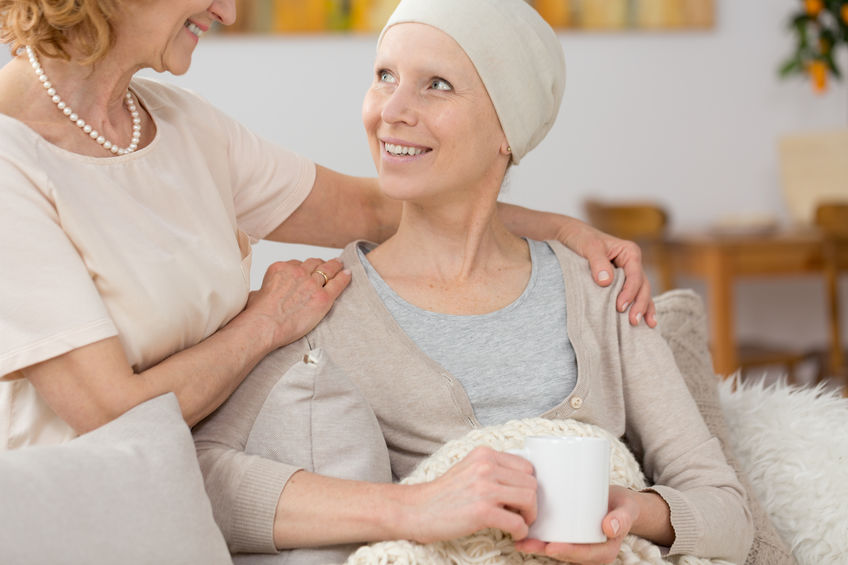
A 2018 study published in the World Journal of Acupuncture-Moxibustion looked at the effect of acupuncture treatments on rectal cancer patients who were experiencing hand-foot syndrome caused by their chemotherapy treatments. Hand-foot syndrome is a known side effect of chemotherapy characterized by redness, swelling, tingling, numbness, itching and pain in the palms of the hands and soles of the feet.
The researchers found acupuncture significantly reduced all of the symptoms associated with hand-foot syndrome to the extent they considered 17 percent of patients completely cured and the treatments were significantly effective in 70 percent of patients.
To conduct the study, researchers from Chongqing Cancer Institute recruited 60 patients with rectal cancer undergoing chemotherapy. Half of the patients received acupuncture and half were treated simply by taking B6 vitamins. Their hand-foot syndrome was scored using two internationally recognized scales indicating symptom severity and physical disability.
The patients in the acupuncture group received 30-minute treatments every day for two weeks. The patients in the B6 vitamin group took the supplement daily for two weeks.
According to traditional Chinese medicine, hand-foot syndrome indicates poor qi and blood circulation, a deficiency in qi and blood or dampness leading to a blockage in qi that prohibits nourishment from reaching the skin and muscles, causing numbness and pain. The acupuncture treatments were directed at promoting blood and qi circulation and removing stagnation.
After the treatments, patients in both groups showed improvement, but symptoms and physical disabilities for the patients in the acupuncture group decreased significantly more than for the patients in the B6 vitamin group. Based on the analysis of the scores, in the acupuncture group, the treatments cured five patients were effective for 16 patients, meaning their symptom score was downgraded to the lowest possible number on the scale and their physical ability score increased to between 80 and 89 out of 100 possible points. The treatments were effective for 70 percent of patients compared with 36 percent of patients in the B6 vitamin group.
The report concludes, “The results demonstrate that an integrative model of patient care utilizing acupuncture as a treatment modality produces significantly less adverse effects associated with chemotherapy.”
Research consistently shows acupuncture is effective at increasing circulation throughout the body, improving the flow of blood and therefore nutrients to injured cells, muscles or tissues.
https://www.healthcmi.com/Acupuncture–Continuing–Education–News/1947-acupuncture–reverses–chemotherapy–side–effects?fbclid=IwAR1tYNJU334rcQHyrqaq8DBrP1YJu5EbNXIXoEa2TfNLpjrtJx3-sNkH7sw
Research Update – Traditional Chinese Medicine and HIV
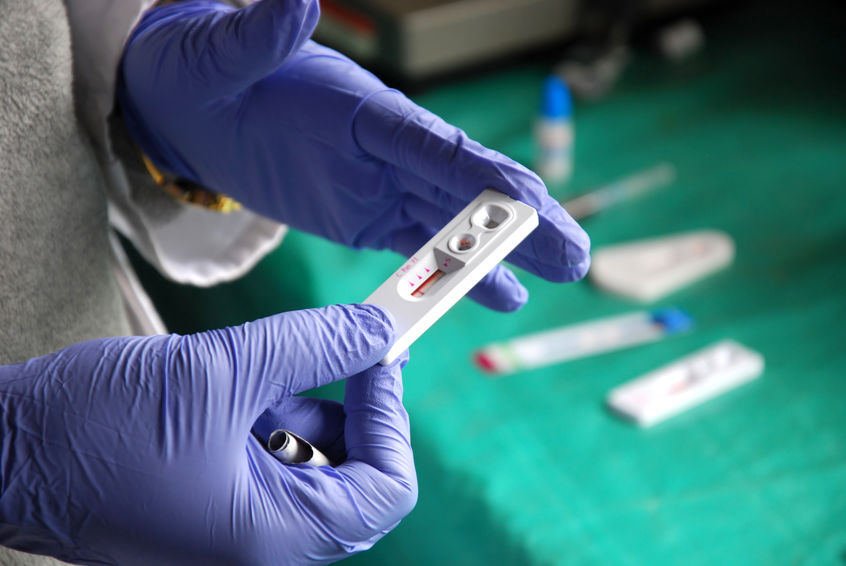
A study conducted at Yale University General Clinical Research Center and published by Alternative Therapies in Health and Medicine shows promise for the efficacy of acupuncture in alleviating symptoms of human immunodeficiency virus, or HIV. The study, while small in numbers of subjects, allows for further study into the use of Traditional Chinese Medicine to support patients with HIV. The patients received acupuncture treatments twice a week for three weeks. Researchers tracked their symptom distress, psychological distress and overall quality of life. The data from this pilot study suggests the participants noticed an improvement in their symptoms and their quality of life.
Acquired immunodeficiency syndrome or AIDS is caused by a virus known as the human immunodeficiency virus or HIV. People can contract HIV through a number of ways, but the most common is having unprotected sex with an infected partner. It can also be spread by contact with infected blood or from mother to child during pregnancy. HIV slowly weakens the immune system, making the host susceptible to multiple infections and diseases that eventually kill the host.
The good news is the numbers of infected people in the United States are steadily declining, and not everybody who is diagnosed as HIV-positive will succumb to the virus. Huge strides in modern medicine have allowed people to live normal lives despite being infected with HIV.
Traditional Chinese Medicine (TCM) is probably the most commonly known alternative to modern medicine due to its long history and the fact more and more people are seeking out ways to avoid taking pills and visiting hospitals.
TCM helps HIV-positive patients by boosting their immune systems, relieving symptoms and decreasing the side effects of prescription medications. Most people who are diagnosed with HIV are advised to start drug therapy as quickly as possible, but many of the medications prescribed have significant side effects.
Many patients report improvements in sleep, stress levels, digestion and immune function once they begin regular acupuncture treatments. And science backs this up. There are two ways the health of HIV-positive patients is monitored: their T-cell count and their overall viral load. For those who begin acupuncture treatments and are consistent with them, T-cell numbers remain high and sometimes even increase and the overall viral load in the body decreases. This helps keep their immune system functioning at a high level, while also combatting things like fatigue and stress associated with the infection.
TCM is unique in its approach to treating HIV because it is one of the few medical systems available that addresses the whole person without compartmentalizing their symptoms. This allows for the patient to receive help in healing not just the body, but also the mind. Multiple studies confirm emotions can affect the body and actually make us sick. TCM addresses the mind-body connection and treats the person holistically, thus providing for an overall better quality of life.
Acupuncture for Temporomandibular Disorders
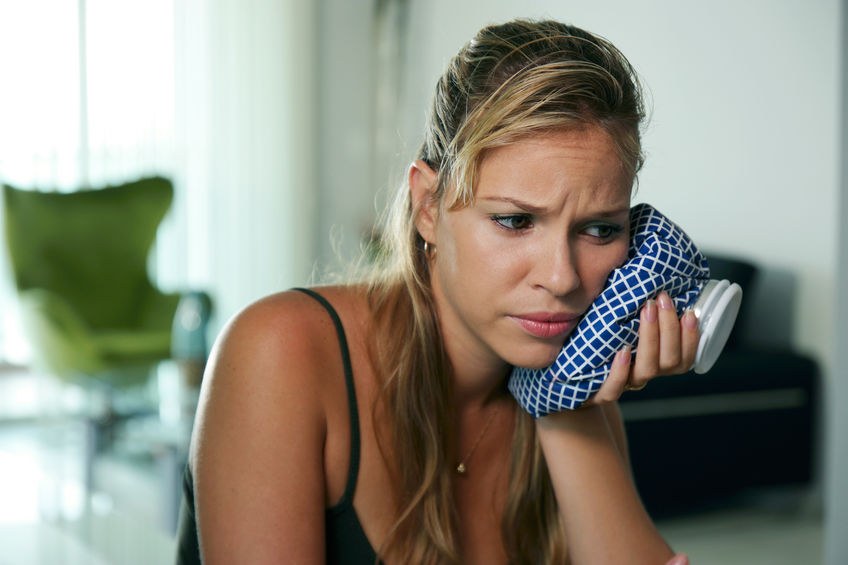
Temporomandibular disorders refers to a group of conditions that affect the joints of the jaw or the temporomandibular joints. These joints are located bilaterally on the face, in front of the ears and connecting the jaw bone to the skull. These joints are complicated, allowing for movement in multiple directions.
For some, temporomandibular disorders (TMD) can be caused by trauma such as a car accident or a hit to the face. But for most, these issues seem to appear out of nowhere. Many people do things on a daily basis or have underlying conditions that can cause or contribute to the development of temporomandibular disorders. Things like teeth grinding, gum chewing, excessive stress, malocclusion of teeth and even arthritis can all be reasons that TMD occurs. The most common symptoms of TMD include pain, headaches, muffled hearing, earaches, pain when chewing, dental pain, chipped or worn teeth, jaw clicking, dizziness, neck pain and difficulty moving the jaw.
Conventional treatments for TMD vary from eating soft foods to taking over-the-counter pain medications and using hot or cold packs. Often, mouth guards and physical therapy are also prescribed. Sometimes specific dental work may also be suggested. And as a last resort, steroid injections and jaw surgery may be used. Unfortunately, the success of these treatments is limited.
Traditional Chinese Medicine can be a great alternative. Acupuncture, moxibustion and electroacupuncture can be especially beneficial for people with TMD.
Numerous studies have shown acupuncture can reduce pain and inflammation caused by TMD. Acupuncture reduces the sensation of pain by directly stimulating the nerves, which changes the signaling to the brain. Acupuncture stimulates the release of neurotransmitters and endorphins in the body. These are naturally occurring substances that help decrease and block pain perception by the brain.
Placing acupuncture needles directly into the belly of the jaw muscle can also elicit a muscle twitch. This muscle twitch can then release the built up tension throughout the muscle, allowing it to reset. When the muscle tension is released, so too is the pain and tightness. By adding in electroacupuncture, the muscle is then reminded of how it is supposed to act.
Acupuncture is also proven to help reduce stress that is often associated with painful disorders like TMD. When people feel stressed, the brain releases a hormone called cortisol. Too much cortisol can alter the way the brain perceives pain, and it can also cause involuntary muscle spasms in the jaw muscles. This can lead to excessive pain in the temporomandibular joints.
If you or somebody you love is facing the pain of TMD, consider utilizing acupuncture and the other modalities of TCM to treat the issue. It is a much safer alternative, it can save a lot of money and these modalities offer improved overall health.
Are you suffering from pain, high level of stress, or just physical or mental tension?
Our wellness center offers acupuncture, cupping, herbal medicine, acupressure massage, and other forms of Traditional Chinese medicine for the treatment of pain and other physical and mental/emotional symptoms.
We accept health insurance (if they cover acupuncture) and offer affordable care plans. We also have payment plans available for those in financial need. For more information or to schedule an appointment call us at 630-837-4241 or schedule online
Five Reasons to Get Acupuncture for Low Back Pain

Statistics show eight out of 10 people will experience low back pain at some point during their life. Seeking medical treatment for back pain is very common. Typically back pain is fleeting and can be easily resolved with rest, heat and an occasional anti-inflammatory like ibuprofen. However, once the damage is done, the recurrence of back pain can be as high as 50 percent. Part of this is because as we age, things like muscles and tendons become less flexible and pliable. It is also very well known in the United States, people are too sedentary and this leads to excess weight gain that can create added pressure on the body, especially the low back. continue reading »
Use these Acupressure Points for Sciatic Pain
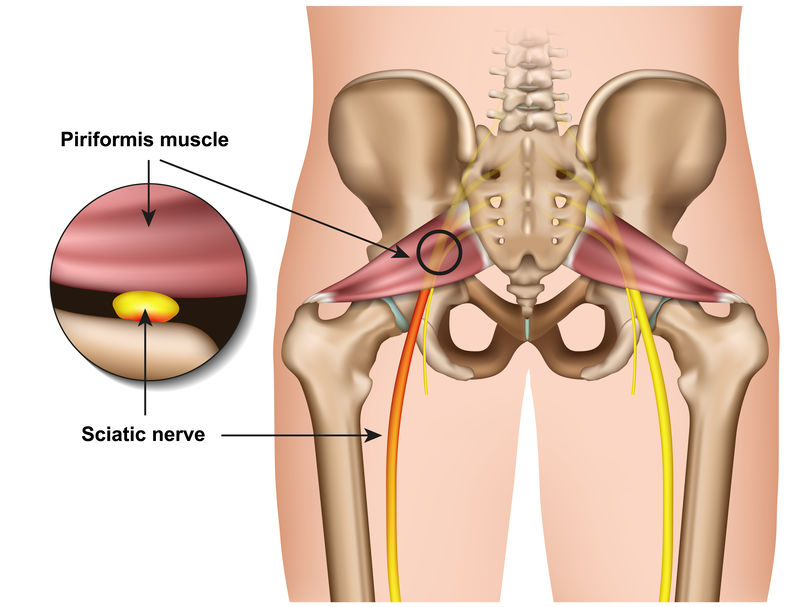
Sciatica is the pain caused by pressure or irritation of the sciatic nerve, which runs from the lower back to the sole of the foot. The irritation can lead to pain anywhere along the sciatic nerve, and it can also create a lack of muscle power to the legs and cause sensations in the legs, buttocks and low back to change. Current statistics show that up to 10 percent of the population between the ages of 25 to 45 are dealing with or have experienced sciatic pain.
The sciatic nerve is the largest nerve in the body. It consists of a large bundle of smaller nerves that begin in the low back region of the spine, travel down the buttocks and move through the leg. Symptoms of sciatica include radiating pain, numbness and tingling. Irritation of the sciatic nerve can be caused by muscle spasms, spinal disc compression or slipped spinal discs.
In traditional Chinese medical theory, blood stagnation is the most common cause of sciatica. Blood stagnation can affect the soft tissue of the lumbar spine, hips and pelvis. This is what causes the muscles to spasm, then creating extra tension that triggers the shooting pain associated with sciatica.
Traditional Chinese medicine suggests several treatment modalities for managing sciatica.
Acupuncture for Sciatica: Many studies have shown acupuncture is more effective at relieving the pain, numbness and tingling associated with sciatica than modern medicinal treatments. Acupuncture treatments can help to reprogram the muscles to stay in a relaxed position. Acupuncture treatments can also help treat sciatica by releasing natural painkillers like endorphins and enkephalins from the brain and neurologic system.
Acupuncture Points for Sciatica:
Urinary Bladder 23: This point is located on the lower back, halfway between the lowest ribs and the hip bone and on either side of the muscle group that runs right up the spine. This point reduces muscle tension and provides relief from low-back pain.
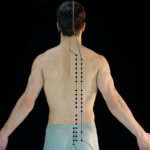
Urinary Bladder 40: Ths point is located directly in the middle of the crease at the back of each knee. This point treats all the major pain sensations felt along the spine. It also helps to control muscle spasms, knee stiffness, arthritis, leg pain and it helps to dissipate excess heat trapped in the body.

Urinary Bladder 62: This point is located just below the ankle bone on the outer side of each ankle. This point is great for relieving lumbar spine tension as well as anxiety.
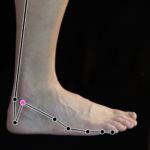
Dietary and Lifestyle Recommendations for Sciatica: Adding potassium to your diet can help you heal from sciatica. Bananas, oranges, potatoes and spirulina are all good sources of potassium. Dark, leafy vegetables and legumes, such as black beans, kidney beans and soybeans are also beneficial when dealing with sciatica. Avoid foods that create dampness in the body, such as spicy, greasy or fried foods and dairy.
Incorporating daily exercise and stretching into your life can also help. The low back and lumbar spine may become weak if they are neglected, so sitting for long periods of time without getting up can be very detrimental. This also has a way of weakening the muscles of the lumbar area, which then can lead to slipped discs. Stretching and moving throughout the day, even after the pain has subsided, is vital to a healthy back.
Are you suffering from pain, high level of stress, or just physical or mental tension?
Or wellness center offers acupuncture, cupping, herbal medicine, acupressure massage, and other forms of Traditional Chinese medicine for the treatment of pain and other physical and mental/emotional symptoms.
We accept health insurance (if they cover acupuncture) and offer affordable care plans. We also have payment plans available to those in financial need. For more information or to schedule an appointment call us at 630-837-4241 or schedule online
